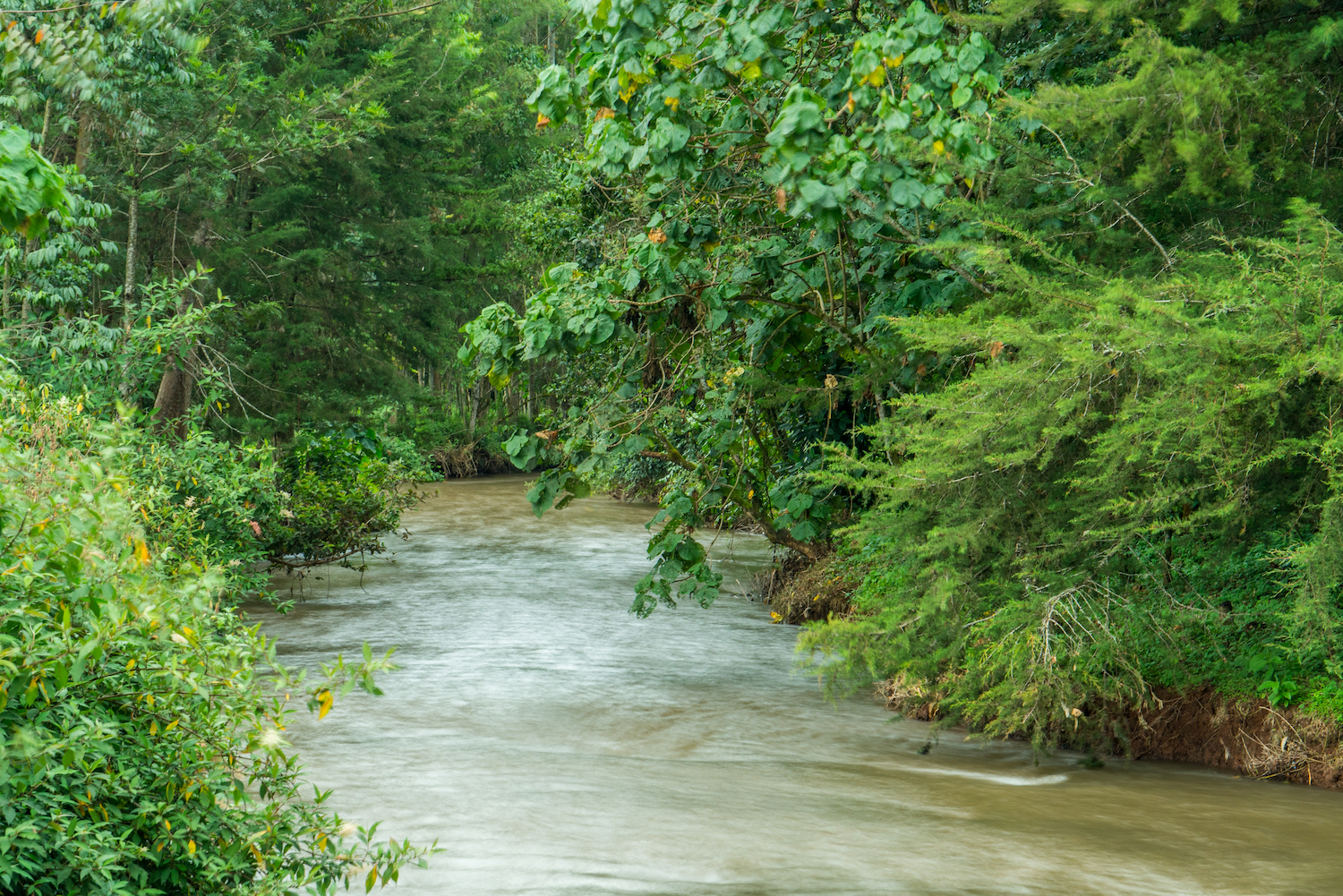
The Mau Forest Complex Water Tower supports millions of people, making it one of Kenya's most important. (Image: The Center for International Forestry Research/Flickr)
Determining the efficacy of climate action is imperative to slowing the climate crisis and keeping stakeholders invested. Without data and evidence, it’s impossible to know if interventions that target climate change are working or not. A new artificial intelligence (AI) model provides that information for a reforestation project in Kenya and could be used elsewhere, showing potential to advance climate solutions by bolstering support and investments.
AI models receive data and use it to detect patterns, draw conclusions, and make predictions. In Kenya, AI models from the global tech company IBM are learning from data collected by NASA satellites to track and visualize the impact of reforestation efforts.
In particular, the project looks at tree-planting and conservation around the country’s water towers — not the manmade kind, but rather mountainous, forested regions that collect and filter rainwater and snow, allowing it to seep slowly into rivers, lakes, springs and the groundwater supply.
The evolution of a long-standing partnership
IBM’s partnership with the U.S. space agency NASA is nothing new. The tech giant has worked with the U.S. government agency for half a century, Juan Bernabe-Moreno, the director of IBM Research Europe in Ireland and the U.K., told TriplePundit. “We were part of the moon landing. We had 4,000 engineers working, helping, completing trajectories … We've been working with NASA for a long time.”
The partnership evolves with the most pressing issues of the day. Today, that means solving for climate change. It’s an apt arrangement considering the sheer amount of information that NASA collects. Harnessing that data through AI models has the potential to measure, and thus bolster, effective solutions.

Using AI to measure biomass in Kenya
One of the ways IBM is utilizing NASA’s treasure trove of data is by measuring biomass — organic material like plants, wood and waste — in Kenya. The National Tree Growing and Restoration Campaign works to reforest the areas around the country's water towers — which are vital to Kenya's people, wildlife and ecosystems, but threatened by agricultural expansion, charcoal production and forest fires, among other issues.
“Basically, we look at two different pictures — the before and after — so two different time frames, and we can overlap and compare the data,” Bernabe-Moreno said. “We can [observe] the data in terms of where we see trees or forestry being added, or forestry being removed, over two different points of time. We can really quantify the kind of the sequestration potential of this above-ground biomass.”
Evaluating the effectiveness of reforestation efforts
The information the AI model provides is extremely useful to the Kenyan government, because it makes it possible to quantify the impact of reforestation efforts, Bernabe-Moreno said. These efforts include planting 15 billion trees by 2032 and achieving 30 percent tree cover by 2050, which is triple the previous tree cover goal.
Such pledges follow on the heels of one of the most devastating droughts the Horn of Africa has seen in recent history. The climate crisis is clearly to blame. By restoring the water towers and preventing further degradation, the hope is that some of the most catastrophic effects of increased temperatures and changes in weather patterns can be mitigated.

IBM is using its technology to evaluate the effectiveness of various methods and campaigns that support Kenya's water tower reforestation effort. As a result, the government will be able to make data-informed decisions on where and how to most successfully proceed with its efforts. The project has already shown that something as simple as a fence can have restorative power when it comes to reforestation.
Oftentimes people doubt whether sustainability efforts have a positive effect because they can’t see the results, which can have consequences for sustained action, Bernabe-Moreno said. IBM found that Kenya’s data-backed reforestation project is having a positive psychological effect on people because organizers can prove it’s working and results in more tree cover over time.
“It's very encouraging because it's like," he said of sharing the results with others. "Suddenly, people who were overwhelmed by the complexity of climate action, they see a bit of a light.”
An open source AI model for open access
On its own, the AI model is a tool and not a solution to any singular problem, Bernabe-Moreno said. As such, it can be used to measure the efficacy of any number of interventions to inform decision-makers on whether a particular effort should be continued or not. With this in mind, IBM isn’t interested in developing proprietary AI or limiting access to it — this open-source access is actually a pillar of its agreement with NASA. Any scientist who wants to should be able to download the model and specialize it to their needs, he said.
While IBM’s use of AI to measure the reforestation in Kenya is still in its infancy, the results are already promising. They point to the AI model’s potential to steer climate solutions and investments, Bernabe-Moreno said.
By making sustainability and climate action measurable, governments and businesses can see which solutions are worth putting time and money into. Likewise, people can see that their actions are paying off. Many individuals may be reluctant to take action if they have no way of knowing whether the extra effort is worth it, so the ability to see the results is a welcome encouragement.

Riya Anne Polcastro is an author, photographer and adventurer based out of Baja California Sur, México. She enjoys writing just about anything, from gritty fiction to business and environmental issues. She is especially interested in how sustainability can be harnessed to encourage economic and environmental equity between the Global South and North. One day she hopes to travel the world with nothing but a backpack and her trusty laptop.














